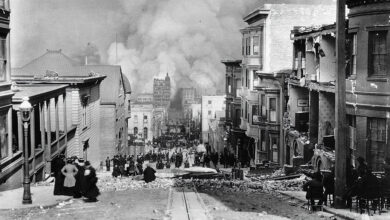The Costa Concordia Wreck
On the evening of 13 January 2012, the luxury cruise liner Costa Concordia set sail on what should have been a routine Mediterranean voyage. However, within hours, the ship ran aground off the coast of the Italian island of Giglio, leading to one of the most dramatic maritime disasters of the 21st century. The event shocked the world, not only because of the tragic loss of life but also due to the series of human errors and failures in leadership that contributed to the catastrophe.
The Costa Concordia, owned by Costa Crociere, was a magnificent vessel, measuring 290 metres in length and capable of carrying more than 4,000 passengers and crew. Equipped with luxurious amenities, the ship was a floating resort, offering fine dining, entertainment, and world-class accommodation. Departing from Civitavecchia, the vessel was en route to Savona as part of a week-long cruise around the Mediterranean. It was intended to be an unforgettable experience for those on board, but instead, the voyage became a nightmare.
At 9:45 pm, the ship veered dangerously close to the rocky coastline of Giglio. In an apparent attempt to perform a sail-by salute, where a ship passes close to land in a display of grandeur, Captain Francesco Schettino deviated from the approved route. The ship struck a submerged rock formation, tearing a 53-metre gash along the hull. Seawater rapidly flooded the lower compartments, causing the vessel to list. Within minutes, the Costa Concordia was in crisis, yet there was no immediate call for evacuation.
As confusion spread among passengers and crew, the ship continued to tilt. Power was lost, and darkness engulfed the vessel. Panic set in as people scrambled to locate life vests and lifeboats. Despite the evident emergency, Captain Schettino delayed issuing the abandon ship order, a decision that would later be heavily criticised. Many passengers, initially reassured by crew members that the situation was under control, soon found themselves trapped in a desperate struggle for survival.
When the evacuation was finally ordered, chaos ensued. The severe list of the ship made it nearly impossible to lower some of the lifeboats, leaving many passengers to fend for themselves. While some managed to climb down ropes or jump into the freezing waters, others remained stranded. Rescue efforts were hindered by the vessel’s precarious position, and as the hours passed, hopes of a swift evacuation diminished.
The Italian Coast Guard and local emergency responders arrived swiftly, but the situation was already dire. Chilling accounts emerged of passengers waiting for rescue as the ship continued to sink into the sea. Eventually, search teams combed through the wreckage, discovering victims who had succumbed to hypothermia, drowning, or injury. In total, 32 people lost their lives, with hundreds more suffering physical and emotional trauma.
As the scale of the disaster became apparent, scrutiny fell on Captain Schettino. Investigations revealed that he had abandoned the ship early in the crisis, leaving passengers and crew to fend for themselves. Recorded communications between Schettino and the Italian Coast Guard exposed his reluctance to return to the vessel, leading to widespread condemnation. Dubbed ‘Captain Coward’ by the media, he faced charges of manslaughter, abandoning ship, and causing a maritime disaster. In 2015, he was convicted and sentenced to 16 years in prison.
The aftermath of the wreck presented an enormous logistical challenge. The Costa Concordia remained partially submerged off Giglio’s coastline for over two years, becoming both a grim reminder of the tragedy and an environmental hazard. The Italian government, along with salvage experts, orchestrated one of the most ambitious maritime recovery operations in history. In September 2013, the wreck was successfully righted in a complex engineering feat known as parbuckling. By July 2014, the ship was refloated and towed to Genoa for dismantling, marking the end of its ill-fated existence.
The disaster led to significant changes in the cruise industry. Stricter safety regulations were introduced, including mandatory lifeboat drills before departure and improved emergency training for crew members. New guidelines also required that cruise ships maintain safer distances from shorelines and follow designated routes more rigorously. The Costa Concordia tragedy underscored the importance of swift and decisive action in emergencies, reinforcing the responsibilities of ship captains and crew members in ensuring passenger safety.
For the survivors and families of the victims, the events of that night left an indelible mark. Many recounted harrowing tales of fear, uncertainty, and heroism. Crew members and local rescuers who risked their lives to save others were hailed as heroes, but the trauma of the experience lingered for years. The Costa Concordia became a symbol of both human fallibility and resilience, serving as a cautionary tale for the maritime industry. Today, the waters off Giglio have returned to their tranquil state, but the memory of the disaster remains. The wreck site has been cleared, and memorials have been erected to honour those who lost their lives. The Costa Concordia tragedy serves as a stark reminder of the consequences of negligence and the importance of accountability at sea. Though the ship itself has been dismantled, its story endures, ensuring that the hard lessons learned from its final voyage are never forgotten.
The Costa Concordia Wreck FAQ
On 13 January 2012, the Costa Concordia cruise ship struck rocks off the coast of Italy and partially capsized, leading to one of the most infamous modern maritime disasters.
Thirty-two people lost their lives, and many more were injured during the chaotic evacuation of the ship.
The ship struck submerged rocks due to navigational errors and poor decision-making by the captain, who steered the vessel dangerously close to shore.
The ship remained stranded for over a year before being salvaged in a complex engineering operation, and the captain was later convicted for his role in the tragedy.
[this article originally appeared on 5MinuteDisasters.com on 7 June 2025]






